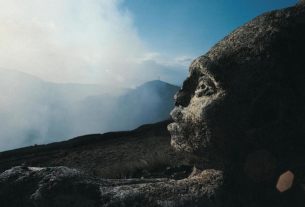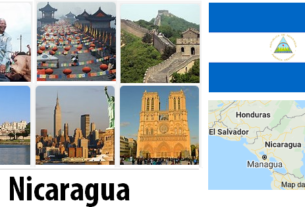According to health-beauty-guides, the Dominican Republic is located on the island of Hispaniola, east of the state of Haiti. The latter, having obtained independence from France in 1804, conquered the Dominican part of the island in 1822 and maintained control until 1844, when the Dominicans defeated the Haitians by sanctioning their sovereignty over the eastern part. In the genesis of the two states we can thus grasp the reasons for the rivalry, not yet completely dormant, which has characterized relations between Haiti and the Dominican Republic. The Haitian occupation and the perpetuating clashes in the following decades compromised relations between the two countries; the rivalry has renewed and intensified several times over the course of recent history, above all following the increase in clandestine migratory flows of the Haitian population towards the Dominican territory. In 1998, the then president Leonel Fernández was received on a visit to Haiti, an event which had not occurred for 62 years and which laid the foundations for an unprecedented phase of bilateral cooperation. The exchange took place particularly after the 2010 earthquake in Haiti, in which the Dominican Republic was the first country to send relief efforts.
On August 16, 2012 Fernández left the leadership of the country to Danilo Medina, exponent of the same centrist front as his predecessor, the Partido de la Liberación Dominican. Having inherited a worrying fiscal deficit from the previous administration (equal to 6.8% of GDP), the new president had to implement important social reforms, to reduce poverty and improve the health and education sectors. In terms of international relations, Medina is less interested than Fernández in an active role. The USA, who occupied the island from 1916 to 1924 and then in 1965, are confirmed as the country’s most important partner. The Dominican Republic contributed a significant military contingent (300 soldiers) to the US mission in Iraq and the two countries agreed on new strategies for air and sea safety and for the fight against drug trafficking and people. Furthermore, in 2004 they concluded the free trade agreement Dr-Cafta (Dominican Republic-Central America Free Trade Agreement). The United States also supported the agreement, signed in 2009, between the Dominican Republic and the International Monetary Fund (IMF).for the granting of loans amounting to 1.7 billion dollars and insisted on the renegotiation of the debt agreement, which existed between the Paris Club and the Dominican Republic, in favor of the latter (2004).
Within the Latin American region, Medina seeks to get closer to the fast-growing liberal economies of Brazil, Colombia and Panama. Venezuela, on the other hand, plays an important role in terms of energy: the Dominican Republic signed the Petrocaribe agreement in 2005, which ensures the supply of Venezuelan oil at advantageous prices. The country, anchoring itself on the one hand to the Venezuelan energy policy, and maintaining the partnership with the United States on the other, manages to remain equidistant from the contrasting spheres of influence of the Bolivarian Alliance (Alba) and the USA. Also the European Union (Eu) became a commercial partner following the 2008 Economic Partnership Agreement, which favored the liberalization of trade in goods, services and investments between the two contractors.
Population, society and rights
The Dominican Republic is made up of more than 10.5 million residents, mostly young and mulatto, of African and European origin. Nearly a third of Dominicans live in Santo Domingo, the oldest European city in the new world (founded in 1496), and in Santiago. The rest of the population lives in smaller urban centers, while 21.9% reside in rural areas. Statistics show that around one million Dominicans have emigrated abroad – mainly to the United States – and that, conversely, 1.2 million foreigners have immigrated to the Dominican Republic. 41% of the population lives below the poverty line and has a total of one fifth of the GDPof the country. Conversely, 10% of the population owns 40% of the national wealth. This socio-economic disparity, which has lasted for several decades, is a source of internal tensions. Poverty means that child labor accounts for 10% of the population. Lack of employment and low wages also encourage the spread of corruption, a social scourge that affects the judicial system and the regular conduct of police activity. As the economic crisis worsened, there was an increase in prostitution involving the adult population, both women and men, and minors. According to the available data, published by Unicef and Ecpat,there are about 30,000 minors in the Dominican Republic, between the ages of 8 and 17, involved in the prostitution market. In this context, the so-called sex tourism is very widespread. There is also a real international trafficking in Dominican women, condemned to be exploited especially in Western Europe, Argentina, Brazil and Costa Rica. The Dominican government has not been able to fight trafficking in human beings, despite having implemented very strict legislation (up to 20 years in prison for exploiters), launched a series of investigative investigations to intercept trafficking along the main routes and ratified the international protocols against the trafficking of persons and the exploitation of minors.


